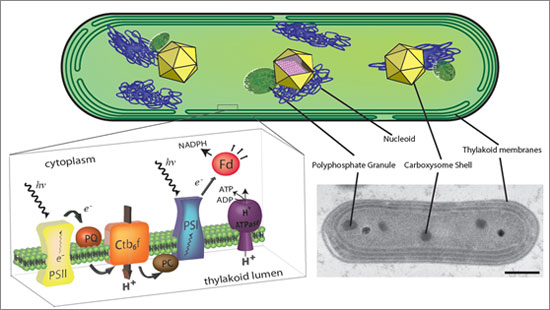New technology from researchers at the Wyss Institute for Biologically Inspired Engineering at Harvard University greatly improves the efficiency with which hydrogen can be produced in one type of microbe — potentially bringing biological production of this clean fuel source one step closer to economic feasibility. Their discovery, the findings for which appear in the Proceedings of the National Academy of Sciences, resulted in a 500-fold increase in the amount of hydrogen produced in the bacterium used in this research.
For more than a decade, hydrogen has been touted as a clean alternative to fossil fuels because it releases a significant amount of energy relative to its weight and also produces nothing but water when it burns. It can also be produced cleanly, using biological methods, such as photosynthesis. However, the high costs incurred in production have proved too big an obstacle to allow for its wide-spread use.
“Hydrogen is now the Holy Grail,” said Wyss Institute core faculty member, Pamela Silver, who led the project. “But we are in no way close to producing it in a sustainable manner. To do that, substantial gains would need to be made in the production technologies.”

Silver’s team, which included Wyss Institute postdoctoral fellow, Daniel Ducat, and Gairik Sachdeva of Harvard’s School of Engineering and Applied Sciences, has made headway toward one such gain. They focused their attention on one possible — yet problematic — biological production method involving an enzyme known as hydrogenase.
Certain types of hydrogenase can produce a constant flow of hydrogen using only sunlight and water, but most cannot. The difference lies in the particular enzyme’s ability to tolerate oxygen. Most variations are so intolerant of oxygen that its presence will shut down hydrogen production process within a matter of minutes. Yet, creating a way to keep oxygen from entering the production environment would be both costly and impractical — issues that have effectively kept this method off the table.
“Hydrogenase is very efficient in production, but the oxygen issue is a big problem,” said Silver. “You could actually end up expending as much energy in trying to keep oxygen out of production as you would be liable to generate in the first place. It’s an interesting research question.”
The researchers developed a technology that could serve as a platform from which to engineer oxygen-tolerant enzymes. Their approach could help lead the way to a cost-effective process for producing significant amounts of hydrogen.